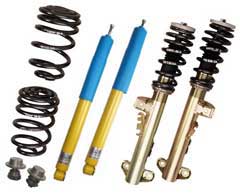Rough Road Driving ?Prolong the Life of Your Suspension - Vol.41
Most motorists do not take everything that their mechanic recommends as the gospel truth. They are overly afraid of being taken for a ride and often need to see the broken part first before agreeing to replace anything. This is especially true when it comes to shock absorbers and struts. It does not help that the Motorist Assurance Program (MAP) ruled that replacement is only required when oil is leaking on the housing, when it has broken, missing or damaged mounting hardware, when the shock and strut piston damaged or bent, or is severely corroded.
Because of this policy, manufacturers of shock absorbers and struts marketed their products as ride control upgrades instead of replacement or repair parts. Motorists unsatisfied with the manner their vehicle rides or handles can buy new shocks and struts minus the feeling that they are buying something unnecessary.

Leaking shock absorber or broken springs are easy to detect, but it is not easy to pinpoint the cause of other troubles concerning ride control. A shaky or bouncy ride for example, is not always caused by faulty shock absorbers or struts and can actually be a manifestation of other problems like an unbalanced wheel, twisted rims or worn out tires.
Suspension and steering are interrelated systems, meaning trouble with one can influence the other. A defective shock absorber could enable strong shocks to vibrate through the steering mechanism and be felt by the driver. Poor ride control problem can then be misdiagnosed as a steering problem. On the other hand, the steering might feel rigid and sluggish to come back but the cause can be a worn out upper bearing on the front struts and have nothing to do with steering.
Heavy duty shocks and struts have wider diameter piston bores and are the right upgrade or replacement choice for SUVs. High performance gas-charged shocks and struts can greatly improve the cornering and handling capability of vehicles not previously outfitted with such units. Gas dampers are recommended for general purpose applications. Motorists who demand for the best handling performance should choose the special high –pressure gas struts with dual –tube shocks.

Pouring three ounces of automatic transmission fluid on the strut housing when installing a replacement cartridge improves the heat transfer from the cartridge. Any height difference between the old and the replacement cartridge can be fixed by using spacers or washers.
Wheel alignment is required after replacing the struts. When brake lines are released to sever connections with the struts to be replaced, be sure to bleed the brakes to release any air bubbles that might have entered the line.
Use an appropriate type of spring compressor making sure that the spring is held firmly and the spring is not too compressed to avoid damage. Ensure that the spring is correctly placed and seated prior to releasing the spring compressor. You can also use ready to install or pre assembled struts as an easier alternative.